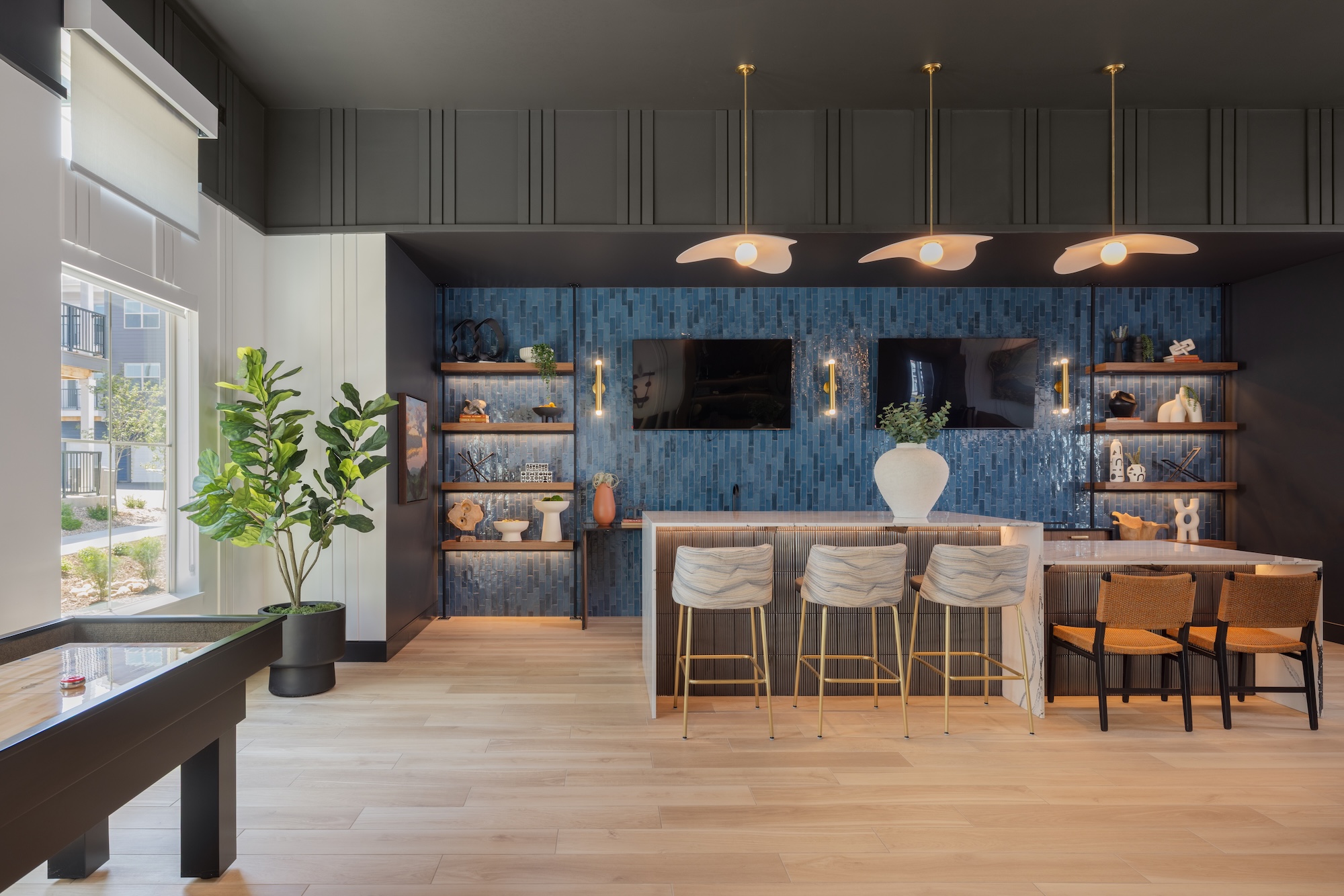The Relationship Between Neuroaesthetics and Experience Design in Commercial Interiors
In recent years, a new frontier has emerged in interior design: Neuroaesthetics, the scientific study of how aesthetic experiences—such as light, sound, texture, and nature—affect our brain and body, specifically through our nervous system. By understanding these impacts, designers can create spaces that go beyond beauty, strategically fostering environments that support emotional well-being, productivity, and even health. For commercial interior design firms, incorporating principles of Neuroaesthetics alongside experience design is transforming the way we approach the built environment.
How Neuroaesthetics is Changing the Way We Design
Neuroaesthetics is helping us design spaces that not only look beautiful but also resonate on a deeper, often subconscious, level. It acknowledges that people don’t just see design—they feel it. Whether it’s the calming effect of natural light or the invigorating qualities of a well-curated color palette, understanding how the brain and nervous system respond to aesthetic stimuli has given designers a powerful tool to shape experiences within built environments. By using neuroaesthetic principles, we are creating spaces that can inspire creativity, reduce stress, and promote general well-being.
As Emily Hansen, our VP of Design Operations, observes: “People spend a large portion of their lives indoors, so it’s crucial that our surroundings support our mental and emotional health. By intentionally designing spaces that promote growth, creativity, and well-being, we make a significant impact on daily life.”
The Impact of Neuroaesthetics on the Built Environment
The practical impact of Neuroaesthetics on the built environment is profound. Informed by research, we can now make design choices that positively affect people’s health and productivity. For example, biophilic design, which emphasizes a connection to nature, has been shown to reduce stress and improve cognitive function. In commercial settings, integrating biophilic elements like natural materials, plant walls, and large windows that let in abundant daylight can create a more comfortable and inviting environment. Lighting design, too, has become increasingly nuanced; by carefully adjusting light intensity, color, and layering, we can promote a sense of calm or, conversely, a sense of energy and focus.
This approach is evident in several of our recent projects. For instance, in an ongoing project in the southwest corner of Denver, we’re in the schematic design phase of a fitness and wellness wing that incorporates elements like cold plunge pools, saunas, and spa-like bathrooms adjacent to a fitness center—all designed to prioritize wellness. Studio 10 led the interior design efforts for the new Arden building in Englewood, which includes live green walls in the lobby and coworking areas to enhance air quality and bring the outdoors in, aligning with growing research on nature’s positive impact on mental well-being.
Regarding Arden, Emily Hansen adds, “With stunning mountain views, this project includes features that invite residents to enjoy nature and connect with their surroundings, including a gear rental amenity to encourage outdoor activity.” These design decisions are crafted with the principles of neuroaesthetics in mind, fostering environments that promote both relaxation and connection.
Team Perspectives on Integrating Neuroaesthetics in Design
Our team has been exploring ways to incorporate these principles on every level. Earlier this year, team members Blake Mascolo and Portia Kettering attended the Science in Design Summit, where leaders in the field shared insights into the role of aesthetics in human psychology. Key takeaways included the importance of biophilic design, the need for aesthetic experiences as a fundamental human drive, and the idea that environments can actively heal or harm us based on their design.
One exciting development in the field is Visual Attention Software (VAS), which helps designers understand which elements of a design capture attention first. This insight allows us to design spaces that are not only visually appealing but also intuitively functional. As Mike Peterson, one of the summit’s speakers, emphasized, “Providing beautiful, nature-influenced design is not just a design choice—it’s an obligation.” Interior designers, he argues, serve as an alternative health resource, given our capacity to improve physical and mental well-being through our work.
Neuroaesthetics and Experience Design: Creating Balanced Environments
Another significant insight from the summit was the concept of NeuroArchitecture, which examines the impact of built environments on the brain and behavior. Creating balance in design, or “homeostasis,” is key to achieving environments that support well-being. Don Ruggles and Meredith Banasiak, speakers at the summit, discussed studies showing that enriched environments, such as those with ample light, diverse textures, and opportunities for movement, lead to improved mental and physical health.
By incorporating sensory balance—through light, color, and natural elements—into our designs, we are consciously shaping spaces that respond to and respect the brain’s needs. This can be as simple as adjusting the color temperature of lights to create a welcoming ambiance or incorporating fractal patterns in materials, which research has shown to reduce stress and enhance creativity. As another speaker, Cecilia Ramos, noted, “Light is personal. When you don’t notice it, it’s done right.” Designing for the subliminal brain, through choices that may go unnoticed yet profoundly affect mood and behavior, has become a critical part of our design ethos.
Conclusion
The relationship between Neuroaesthetics and experience design marks a transformative shift in commercial interior design. As we embrace these concepts, we are not only designing spaces that look good but also create measurable benefits for those who inhabit them. By focusing on how design elements impact the brain and body, we can elevate our work from purely aesthetic to deeply functional and empathetic. In doing so, we create environments that foster well-being, creativity, and a connection to the world around us—ultimately enhancing the quality of life within the spaces we design.
Incorporating Neuroaesthetics into experience design is not just a trend; it’s a necessity. As research continues to uncover the psychological impact of our built environments, we are reminded that design is not a passive act—it’s an opportunity to shape lives in meaningful ways. At Studio 10, we are proud to be on the leading edge of this movement, crafting spaces that connect, calm, and inspire.
Table Of Content



